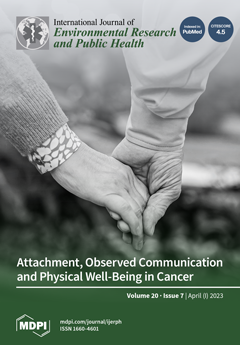Studies have proven the effectiveness of different weight-bearing exercise interventions for diabetic patients with neuropathy; however, several adverse effects were reported using solid surfaces. Thus, in the present study, we investigated the effects of a novel sand exercise training intervention on biomechanical and
[...] Read more.
Studies have proven the effectiveness of different weight-bearing exercise interventions for diabetic patients with neuropathy; however, several adverse effects were reported using solid surfaces. Thus, in the present study, we investigated the effects of a novel sand exercise training intervention on biomechanical and functional parameters in seven diabetic patients (age = 62.7 ± 9.7 years) with neuropathy. Patients underwent a 12-week sand exercise training program, using strengthening, stretching, balance, and gait exercises. They were tested for ankle plantar- and dorsiflexion peak torque, active range of motion (ROM), timed up and go (TUG), and bilateral static balance. EMG activity of tibialis anterior (TA), gastrocnemius medialis (GM), and lateralis (GL) muscles were measured during unilateral isometric contraction in plantar- and dorsiflexion. In the intervention period, plantarflexion peak torque improved significantly (
p = 0.033), while dorsiflexion torque remained unchanged. Plantar- and dorsiflexion ROM increased (
p = 0.032) and (
p = 0.021), respectively. EMG activity of GM (
p = 0.005) and GL (
p = 0.002) measured during dorsiflexion and postural sway in the balance test, as well as time to complete the TUG test, decreased significantly (
p = 0.021) and (
p = 0.002), respectively. No adverse effect was reported during the intervention period. We concluded that sand exercise training can be a safe and effective method to improve plantarflexion strength, ankle flexibility, and balance, which is reflected in better gait function in patients with diabetic peripheral neuropathy (DPN).
Full article





